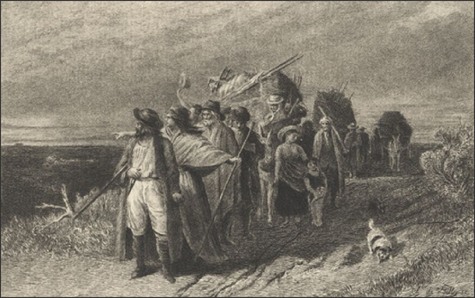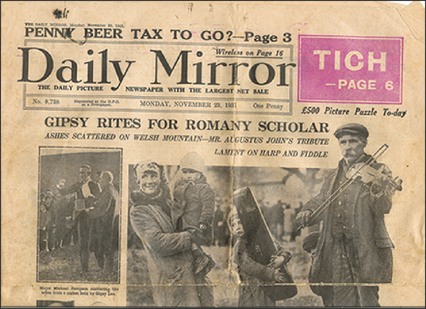




Copyright Warning
All texts/audio/still/motion picture images are strictly copyright to ValleyStream
Media 1980-2017 or to the stated contributor/
copyright holder/s or "unKn". Any unauthorised copying of any images or material
from this website for any use is strictly prohibited without written permission from
the image owners - owners of unknown images ("unKn") from this website please contact
us for fair use or image withdrawal. All rights reserved.

Walshenenge Kaule or Welsh Gypsies
Author Stef Solomon Bate - Cultural Director of Romani Cymru
The Sipsiwn Cymreig or Welsh Gypsies could well be described in the pure divesa (old
times) as ancient nomadic chameleons who meandered freely amongst our Celtic mountains,
green valleys, and lush oak woodlands. In Wales they were known in their native Romnimus
(language) as the Walshenenge Kaule (Black Welsh - kaule means black in Romani chib),
and they have lived relatively peacefully in Cymru for over 400 years. South Wales,
with its easier access, attracted mainly the Angitrenge Romani (English Romanichal
- chal meaning lad). South Wales was more industrialised, with larger populations,
factories and cities, and provided richer picking grounds, especially in the winter
months. In the hot summers spud-picking in Pembrokeshire was a ritual, and across
the Welsh Marches and over Kent way, the English hop- and fruit-picking season became
a yearly pilgrimage.



Augustus John’s tribute at Sampson’s funeral © Daily Mirror
Nonetheless, life on the drom (road) could still be a cruel and harsh existence,
where occasional discrimination against the foki (folk) would have been a daily reality
at times. In general the Welsh Celtic nation embraced the Kaule, and respect was
often the case, shown both ways. The situation in North and Mid England, being heavily
industrialised, would have been very similar, with Roms choppin deals amongst the
working class gauje (non-Gypsies). However, in Southern England, sadly, this was
not the storios (story), and down there Roms suffered probably their greatest persecution.
One typical example from the 1950s was the Shaves Green compounds in the New Forest,
Hampshire, which were described as concentration camps.
But what makes the Welsh Gypsy different from other Romani-chal of Britain or Continental
Europe, and where were the Kaule from originally?






